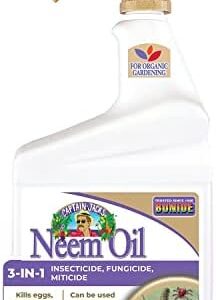If you’ve ever tried to grow plants, you know that they can be quite high-maintenance. Along with needing just the right amount of sunlight and water, plants are also susceptible to a variety of pests and diseases that can wreak havoc on your garden.
Identifying and treating these common plant pests and diseases can be a daunting task, but with a little know-how and some patience, you can keep your plants happy and healthy all season long.
One of the most common plant pests is the aphid. These small, soft-bodied insects can be found feeding on the leaves and stems of a wide variety of plants. They can cause damage by sucking out the plant’s sap, which can lead to stunted growth and yellowing leaves. To identify aphids, look for clusters of small, pear-shaped insects on the undersides of leaves.
To treat an aphid infestation, you can try spraying your plants with a strong stream of water to knock the insects off, or using insecticidal soap or neem oil to suffocate them. You can also introduce natural predators like ladybugs or lacewings to help keep the aphid population in check.
Another common pest to watch out for is the spider mite. These tiny pests are almost invisible to the naked eye, but they can do some serious damage to your plants. Spider mites feed on the plant’s sap, causing stippling on the leaves and eventually leading to leaf drop and plant death. To identify spider mites, look for webbing on the undersides of leaves and tiny, speckled insects moving around.
To treat a spider mite infestation, try spraying your plants with a mixture of water and mild dish soap or horticultural oil. Be sure to cover both the tops and undersides of the leaves to ensure you reach all of the mites.
Other common plant pests include whiteflies, thrips, and scale insects, all of which can be treated with similar methods. The key is to catch the infestation early and take action before the pests have a chance to do too much damage to your plants.
In addition to pests, plants are also susceptible to a variety of diseases that can affect their growth and overall health. One of the most common plant diseases is powdery mildew, a fungal infection that appears as a white, powdery substance on the leaves and stems of plants. Powdery mildew is more common in humid conditions and can be particularly problematic for plants like roses, squash, and cucumbers.
To treat powdery mildew, try removing and disposing of infected plant material, and applying a fungicide to help prevent the spread of the disease. You can also try spacing out your plants to increase air circulation and reduce humidity, which can help prevent future outbreaks.
Another common plant disease is root rot, which is caused by overwatering and poor drainage. Root rot can cause the roots of plants to turn brown and mushy, leading to wilting and eventual death of the plant. To prevent root rot, be sure to water your plants only when the top inch of soil is dry, and make sure they have adequate drainage to prevent water from pooling around the roots.
If you suspect your plants have root rot, try gently removing them from the soil and inspecting the roots for signs of decay. If you see any brown or mushy roots, trim them back and repot the plant in fresh soil with better drainage.
Other common plant diseases to watch out for include blight, rust, and mildew, all of which can be treated with fungicides and proper plant care practices. The key is to catch the disease early and take action to prevent it from spreading to other plants in your garden.
In conclusion, identifying and treating common plant pests and diseases can be a challenging task, but with a little know-how and some patience, you can keep your garden looking green and lush all season long. By monitoring your plants regularly, practicing good plant care habits, and taking swift action at the first sign of trouble, you can help prevent pests and diseases from taking over your garden and ensure that your plants thrive for years to come.






